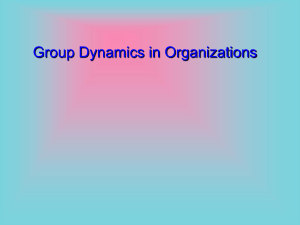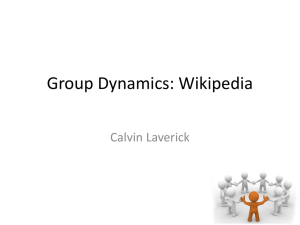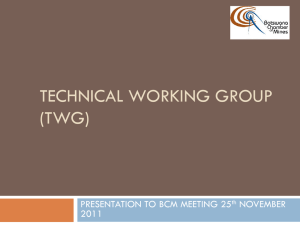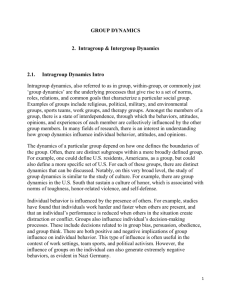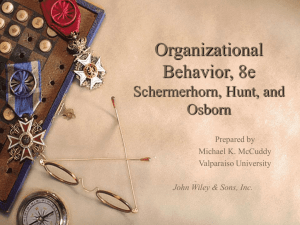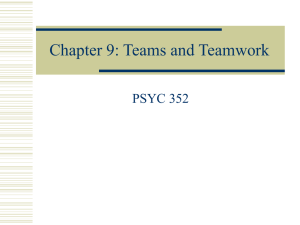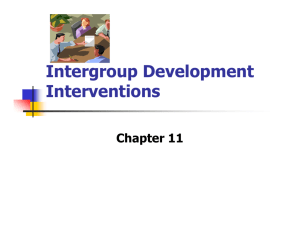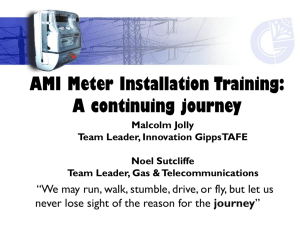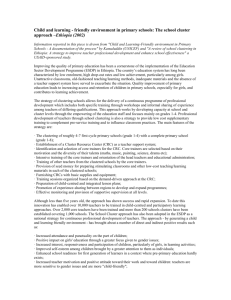Group Dynamics in Organizations
advertisement
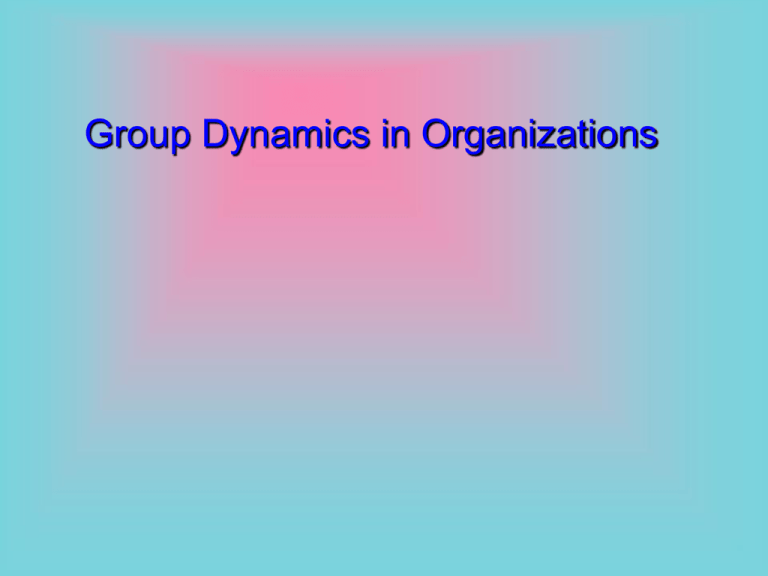
Group Dynamics in Organizations Group Dynamics Synergy through Groups Formal and Informal Groups Group Behaviour •Required and emergent behaviour •Activities, Interactions and Sentiments Homans’ Model (1950, 1961) Informal Groups Formal Groups Required Behaviour Emergent Behaviour - Activities - Activities - Interactions - Interactions -Sentiments Requirements of Group Processes The Job: Division of Labour, Coordination Norms Cohesion etc. Psychological Groups “We” Feeling Psychological Awareness & Identification with Group OUTCOMES •Performance •Productivity •Satisfaction of Organizational Members Some further concepts relevant to the study of group dynamics Norms Idiosyncratic credit Status Cohesion Conformity and Deviance Deviants Group Think The Risky Shift Theories of Group Formation Balance theory Individual X Individual Y Z Common attitudes and values, Religion, Politics, Lifestyle, marriage etc Theories of Group Formation Exchange theory Exchange theory of groups is based upon reward-cost outcomes of interactions. A minimum positive level (reward greater than cost) of an outcome must exist in order for attraction or affiliation to take place. Rewards from interactions gratify needs, while costs incur anxiety, frustration, embarrassment, or fatigue. Propinquity, interaction, and common attitude all have roles in exchange theory. Identifiable stages of group development 1. Forming 2. Storming 3. Norming 4. Performing 5. Adjourning Intergroup Dynamics Goal Conflict Sharing Common Resources Power Dynamics Task Interdependencies Consequences of Intergroup Conflicts Managing Intergroup Dynamics Hierarchy Plans Linking Roles Task Forces Integrating Roles/ Groups Superordinate Goals Teams in the Modern Workplace “A working group’s performance in a function of what its members do as individuals. A team’s performance includes both individual results and what we call ‘collective work products’. A collective work products is what two or more members must work on together…..[it] reflects the joint, real contribution of team members.” Teams in the Modern Workplace 1. The work group has a strong, clearly focused leader; the team has shared leadership roles. 2. The workgroup has individual accountability; the team has individual and mutual accountability. 3. The work group’s purpose is the same as the organization; the team has a specific purpose. 4. The work group has individual work-products; the team has collective work products. 5. The work group runs efficient meetings; the team encourages openended, active problem-solving meetings. 6. The work group measures effectiveness indirectly (for example, financial performance of the overall business); the team measures performance directly by assessing collective work-products. 7. The work group discusses, decides, and delegates; the team discusses, decides, and does real work together. Team Building Both intragroup and intergroup effectiveness can be increased through team building, a technique which uses a series of steps to bring the group members together, make them share their perceptions of each other and understand each other’s point of view. These efforts help members to resolve their problems and work together in a cooperative and collaborative mode. Team building, and third party peacemaking can be used as useful intervention strategies to develop greater organizational effectiveness. Team Building Training Guidelines For Developing Effective Self-Managed Teams Steps of Training 1. Establishing Credibility 2. Allow ventilation 3. Provide an Orientation 4. Invest in the process 5. Set Group Goals Summary The trainers must first establish their knowledge and believability The trainers must have their anxieties and unsolved issues cleared before starting The trainers should give specific verbal directions and provide clear expectations and models of behaviour Early on, have the team identify its problems and concerns The Trainees create, through consensus their own mission statement and then set goals and specific activities and behaviours to accomplish these goals. 6. Facilitate the Group Process The trainees are taught about how groups function and are given techniques, such as nominal grouping and paired comparison. Team Building … Steps of Training Summary 7. Establish Intragroup Procedures This involves setting up a meeting format that might include reporting minutes, making announcements, discussing problems and issues, proposing solutions, taking action, and making new assignments. 8. Establish Intergroup Process Although the team is self-managed, leaders must be selected in order to interact with others, such as supervisors, managers and other teams. 9. Change the Role of the Trainers As the team becomes more experienced and empowered, the trainers take on a more passive role. 10. End of the Trainers’ Involvement At this point, the team is on its own and is selfmanaged.
